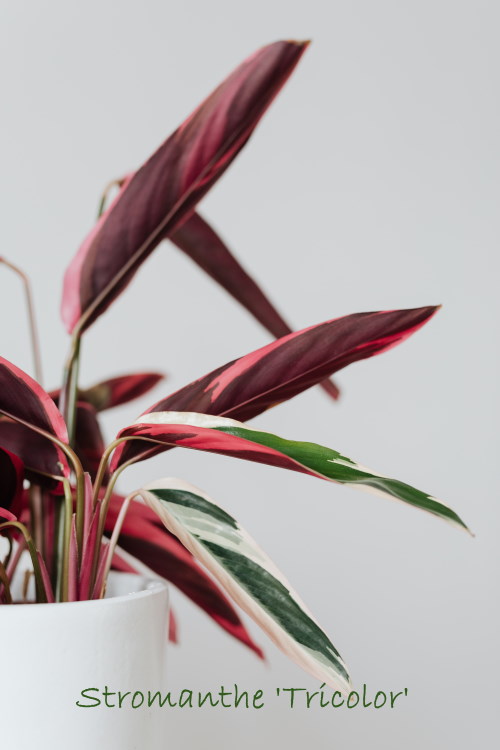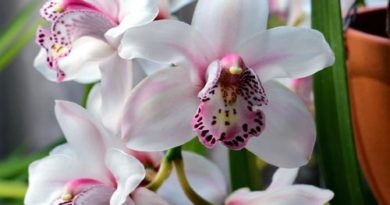Stromanthe Sanguinea House Plant Care
Botanical Name: Stromanthe sanguinea
Gorgeous foliage in dramatic colors make this Brazilian native a must-have for your indoor houseplant collection.
Each emerald green leaf looks like a masterpiece, brushed with creamy white, light green and sometimes pink. Its leaves stand upright, revealing red undersides.
 Give this tropical foliage plant plenty of light to keep its variegation.
Give this tropical foliage plant plenty of light to keep its variegation.Caring for Stromanthe Year-Round: Problems, Solutions and Answers
Wondering when to repot Stromanthe? Repot when the plant appears crowded, using a pot that’s just 1-2 inches (2.5-5 cm) larger. Spring is a good time, when it is starting its most vigorous time of growth. Use a pot with drainage holes to prevent over-watering. This is a good time to divide plants, if you want.
Brown leaf tips may be caused by dry air. Give this South American native the moist air it craves year-round. (See “Humidity” below). It’s a good idea to use a humidity gauge, rather than guess. Homes can become extremely dry in winter.
Something bugging your plant? Stromanthe seems to shrug off pests, though there are a couple to watch for. Dry, warm conditions in winter may draw spider mites to indoor plants. You’ll first notice their fine webbing between leaves and stems. Treat any infestation immediately to prevent these destructive pests from moving on to your other houseplants. Wet, peaty potting mixes sometimes attract fungus gnats. Allowing the potting medium to dry out a bit between waterings will help prevent them.
 Colorful Stromanthe is a gorgeous houseplant. Photo © Karolina Grabowska
Colorful Stromanthe is a gorgeous houseplant. Photo © Karolina GrabowskaStromanthe Varieties and Buying Tips
This tropical beauty is seldom seen in nurseries and garden centers, but it’s well worth seeking.
Stromanthe sanguinea ‘Tricolor’ is a popular cultivar for its stunning cream, white and green leaves with red undersides. ‘Triostar’ is splashed with cream, pink and green with red underneath.
Stromanthe Sanguinea Care
Origin: Brazil
Height: Up to 1 ft (30 cm)
Light: Bright light is essential for good leaf color. Put your plant where it’ll get plenty of light, but protect plant from hot midday sun, which may cause brown scorch marks on leaves.
Water: Allow top 1-inch (2.5 cm) to dry out before watering. Take care not to over-water — soggy soil will cause Stromanthe sanguinea stems to collapse, and may lead to root rot. It’s a good idea to use a pot with a drainage hole; water thoroughly, then empty drainage tray. Water less in winter, but don’t allow the plant to dry out.
Humidity: This tropical native wants at least 50% relative humidity. If the air is dry, especially in winter, use a cool-mist humidifier or pebble tray.
Temperature: Average to warm 65-80°F/18-27°C year-round. Stromanthe doesn’t like big fluctuations, but will tolerate temps as low as 60°F/16°C in winter. Keep plant away from cold drafts from entryways or blasts from A/C or heat vents.
Soil: Peat moss-based potting mix.
Fertilizer: Feed once a month spring through fall with a balanced water-soluble fertilizer.
Propagation: Divide clumps in spring and pot them separately.




